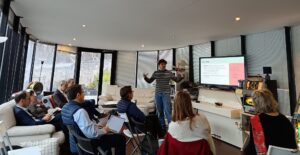🍩 THE IMPACT OF MOBILITY ON THE DONUT MODEL
🍩 THE IMPACT OF MOBILITY ON THE DONUT MODEL
Futura-Mobility & JC Louvain study: the impact of mobility on the planetary limits and social dimensions of Kate Raworth’s Donut, an innovative approach.
Futura-Mobility, together with with Junior Consulting Louvain has conducted an initial study on the impact of mobility based on Kate Raworth’s Donut model. This model proposes a holistic vision of sustainable development by defining a safe and just space for humanity, framed by an ecological ceiling (the planetary limits not to be exceeded) and a social foundation (the fundamentals to be guaranteed for human well-being). In macroeconomic terms, it broadens the notion of progress beyond the current dominant criterion of GDP growth.
The study was based on the most comprehensive review possible of scientific literature to analyse the impact of the mobility sector (goods and passengers) on the 9 planetary limits and 12 social dimensions of the Donut. This sectoral approach to the Donut is innovative since, contrary to local authorities, this model has not been widely picked up by business sectors.
Using this analysis, the impacts of mobility have been mapped, highlighting the planetary and social boundaries most affected and interdependence between them.
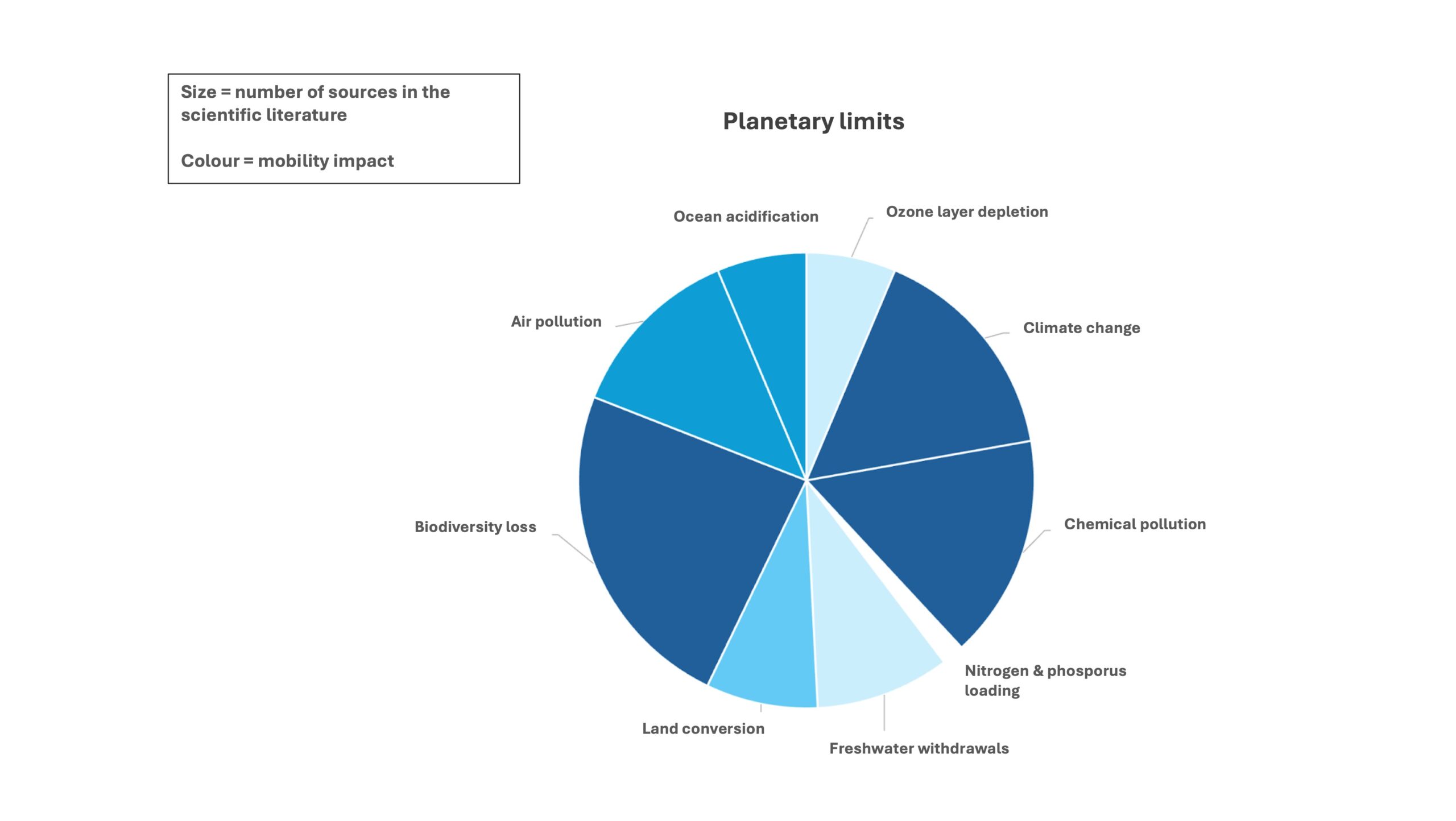
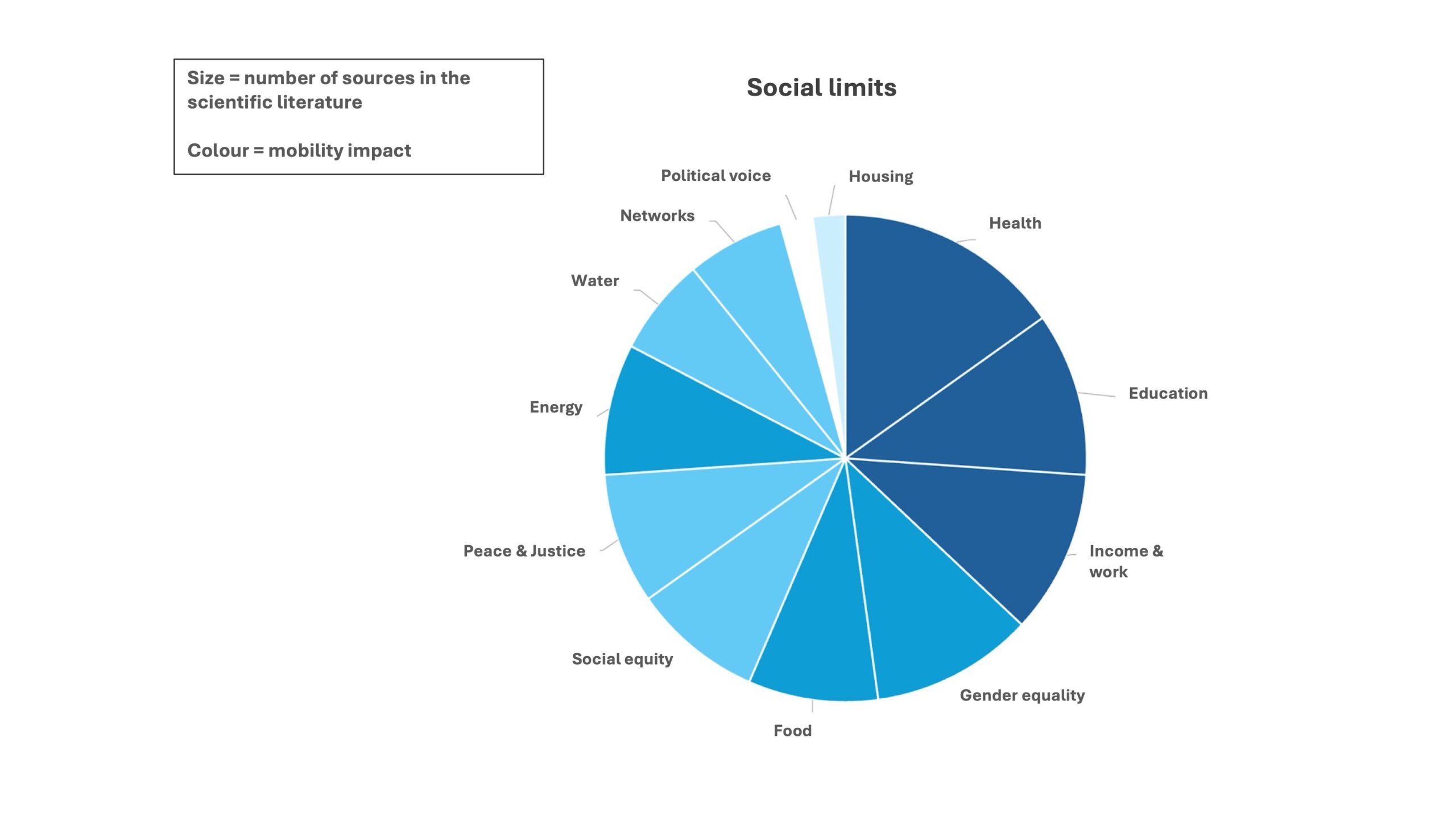
The study confirmed and shed light on the significant impact of mobility on a number of global limits, including climate change, ocean acidification, loss of biodiversity, chemical and air pollution. It also highlighted how mobility contributes to key social dimensions such as employment, health, and education. The study also underlines the lack of data and research on certain aspects, in particular the impact of mobility on the use of fresh water and the nitrogen cycle.
Listed below are the global limits on which mobility has a significant impact and which are well documented, according to the sources used for the study:
👉 Climate change: the transport sector is a major contributor to global greenhouse gas (GHG) emissions. In 2018, it accounted for between 14 and 15.6% of global emissions. Road transport is the main contributor, accounting for 73% of the sector’s total emissions.
👉 Ocean acidification: since transport is a major source of CO2 emissions, it contributes to ocean acidification. When CO2 is absorbed by seawater, it reacts with the water to form carbonic acid (H2CO3). This phenomenon has harmful consequences for marine ecosystems.
👉 Loss of biodiversity: building transport infrastructure, especially roads and railways, results in landscape fragmentation , reducing ecosystem exchanges and habitat availability. This infrastructure acts as barriers to animal species, limiting their movements and access to resources. The pollution linked to mobility flow (both goods and passengers), such as gas emissions, noise and light, also reduces the quality of habitats.
👉 Air pollution: transport is a major contributor to air pollution, particularly through NOx, CO, and fine particle emissions. The concentration of pollutants in the air is higher near major roads, posing a risk to human health. The sources also mention how air pollution can be spread by rain and run-off, contaminating soil and water. There is a strong link between air pollution and chemical pollution.
👉 Chemical pollution: mobility is a major cause of chemical pollution. With regards road transport for instance, sources mention, tyre wear, road and brake abrasion, and vehicle emissions as key factors. These activities release various toxic substances, heavy metals, and endocrine disruptors into the environment. The resulting chemical pollution affects human health and ecosystems.
In short, the mobility sector exerts considerable pressure on the environment, impacting the climate, biodiversity, oceans, air and water quality. Working on understanding these negative impacts is crucial to developing services to make mobility more sustainable and better respect planetary limits.
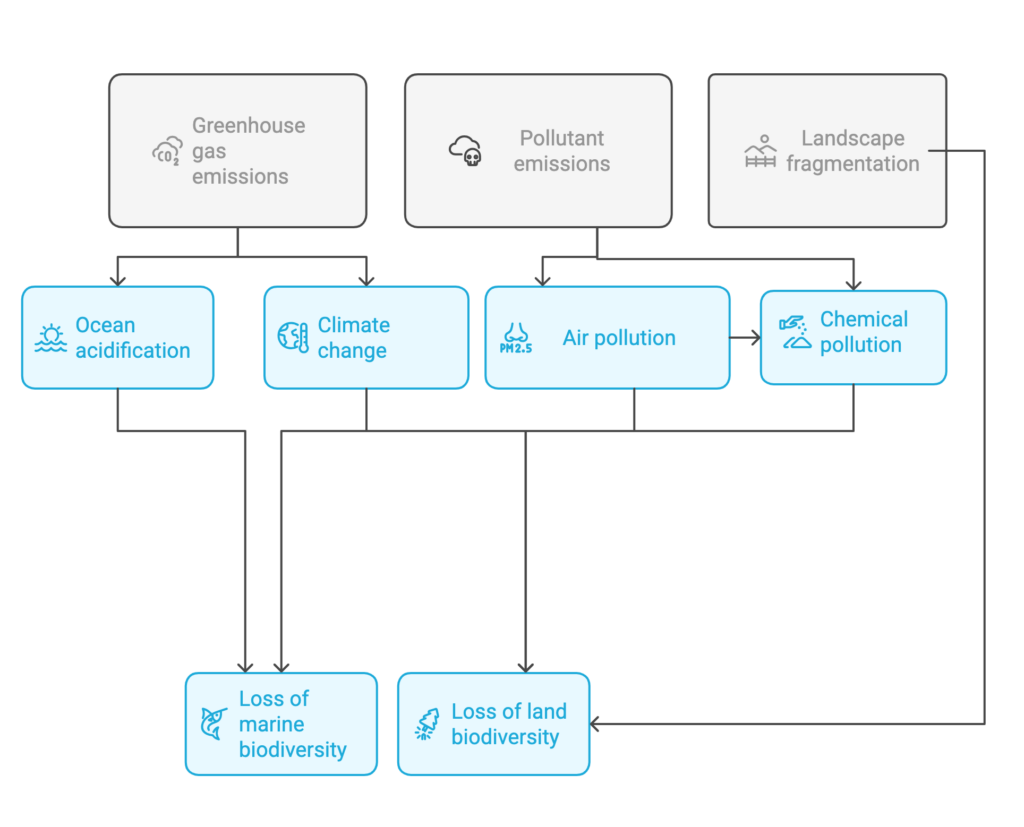
The sources provided pinpoint several social dimensions where mobility makes a significant contribution and which are well documented:
👉 Employment: mobility is a key driver of economic activity and job creation. It facilitates access to markets, jobs, and services, thereby contributing to economic development, especially in rural areas. Transport infrastructure in rural areas plays a key role in improving access to markets, agricultural production, and business creation. A study carried out in Bangladesh highlights the close link between accessibility and poverty reduction.
👉 Health: mobility has a direct impact on health, both positively and negatively. On the one hand, it facilitates access to healthcare, which is essentail for the well-being of populations, particularly in rural areas where access to care is often limited. Studies have shown the importance of mobility for accessing maternity care and reducing maternal mortality. On the other, mobility, notably road transport, is responsible for a significant number of accidents and deaths every year. In addition, air pollution and chemical pollution linked to mobility have harmful effects on human health.
👉 Education: mobility plays an important role in access to education. Easy access to schools is vital for ensuring children attend school, particularly in rural areas where distances may be considerable. Studies in China and Brazil show that the distance children have to travel to school can have a negative impact on enrolment and educational outcomes. However, improving transport infrastructure can also have negative impacts on education by increasing work opportunities for children, encouraging them to leave school early.
👉 Gender equality: mobility has a complex impact on gender equality. Women are often more limited than men, on account of socio-economic and cultural factors like income, family responsibilities, and social norms. This reduced mobility can curb women’s access to employment, education, and economic opportunities. In some contexts, improved mobility can play a part in gender equality by promoting women’s autonomy and independence, while in others it may reinforce existing inequalities.
👉 Social links & communities: mobility fosters social interaction by enabling individuals to move around and take part in social activities. People with reduced mobility can suffer from isolation and a lack of contact with others. Hence the importance of mobility for the psychological well-being and social inclusion of individuals.
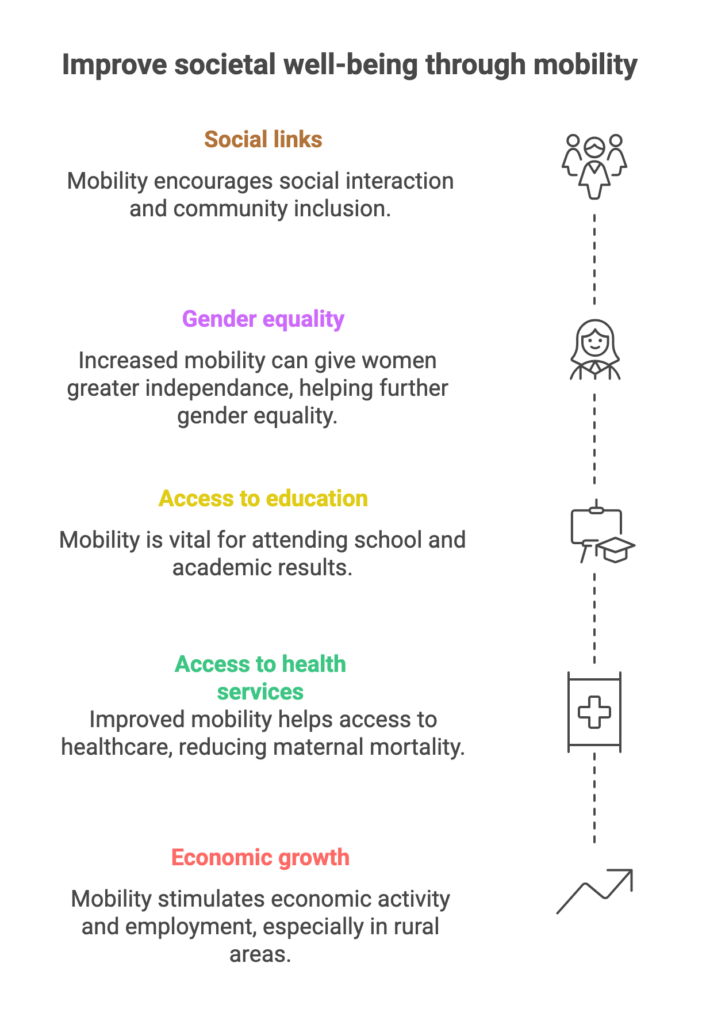
It is important to bear in mind how the impact of mobility on social dimensions can vary considerably depending on geographical, economic, and cultural contexts. The studies cited in the sources often focus on specific cases, and it is necessary to take account of the diversity of situations.
In conclusion, the Futura-Mobility study with JC Louvain has reviewed existing knowledge on the links between mobility and the elements of the Donut, planetary limits and social foundation. It spotlights subjects that have received little attention or are poorly understood, as well as those given greater attention by the scientific community.
The think-tank’s future work will take account of this initial mapping to examine in greater depth the limits and dimensions where mobility has the greatest impact, whether positive or negative.
In 2024, and for several years now, Futura-Mobility has been working on the decarbonisation of mobility, using its discussion sessions with experts and a study tour in Copenhagen to shed light on the blind spots of this topic: infrastructure, rural areas, and spatial planning. The reports are available on Futura-Mobility’s website.
In 2025, the think-tank will focus on the impact of mobility on biodiversity loss and the use of fresh water.
💡 In Copenhagen, the well-being of residents and sustainability guide mobility and urban planning
💡 Towards sustainable horizons for shipping
💡 Decarbonising transport, a transport infrastructure perspective
💡 Decarbonising mobility in rural areas, by uses
💡 Electric Road Systems, towards decarbonising road transport

